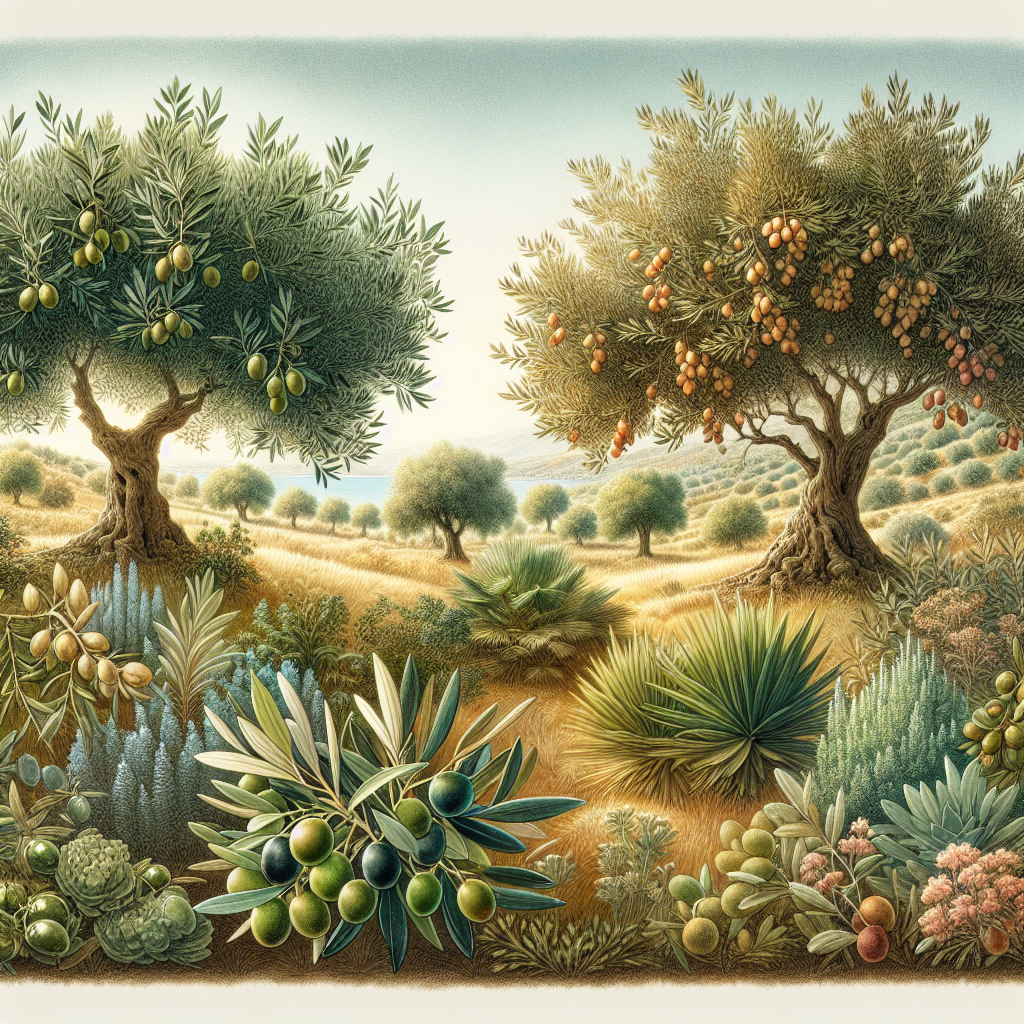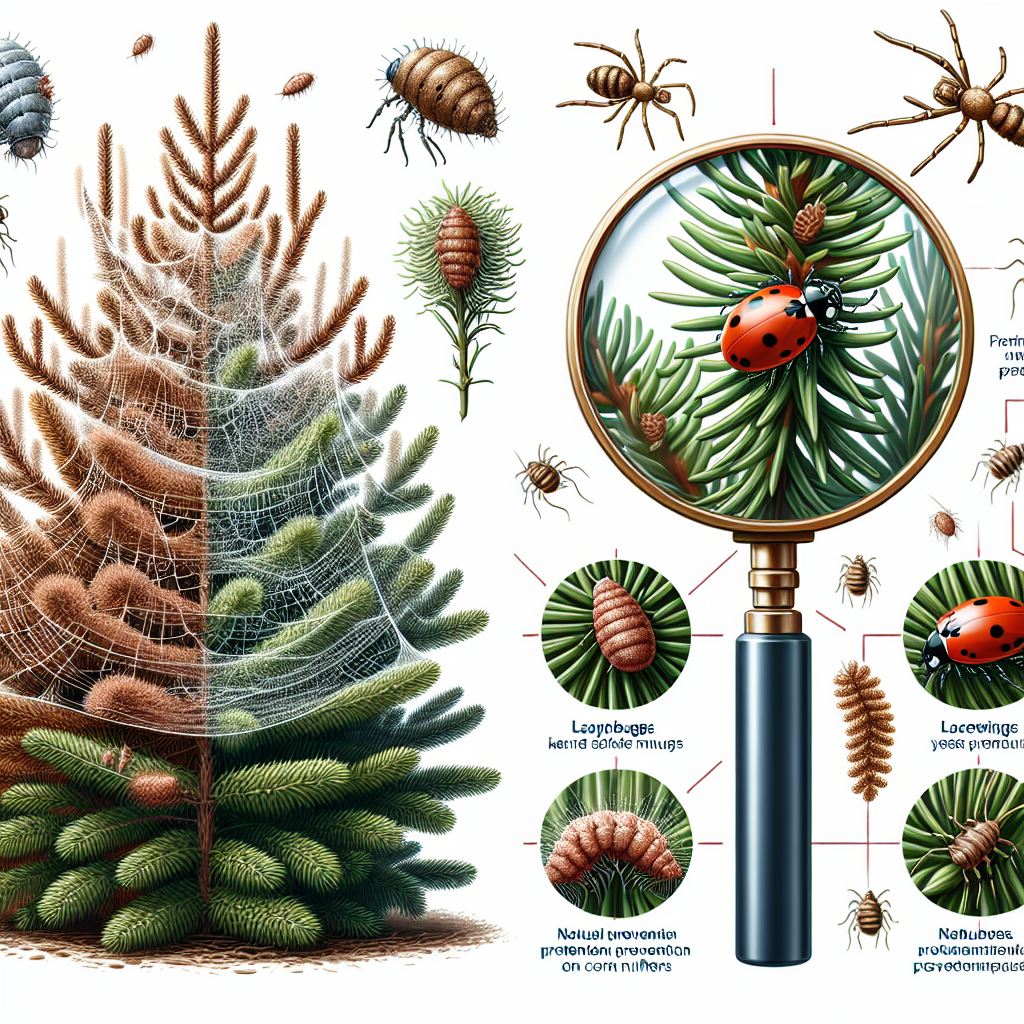Selecting the Right Varieties of Olive Trees
Updated June 30, 2024 at 5:20 am

Understanding Olive Tree Varieties and Their Unique Traits
Pet Friendly: Olive trees are generally pet-friendly, non-toxic plants, a relief for pet owners considering planting them in the garden.
Light Requirements: Olive trees thrive in full sun, requiring at least six hours of direct sunlight daily to fruit and reach their full potential.
Watering: These trees are drought-tolerant once established, needing occasional deep watering, especially during dry spells.
Humidity: Olive trees prefer a dry climate with low humidity, resembling their Mediterranean origins.
Temperature: They are hardy to USDA zones 8-10 and can tolerate temperatures down to 15°F once mature.
Difficulty: Growing olive trees can be medium difficulty for a new gardener but with proper knowledge, they can be a rewarding addition to any garden.
Choosing the Right Olive Tree for Your Climate
Before diving into the vast world of olive tree varieties, assess your local environment. Climate plays a significant role in olive tree success, from the ‘Arbequina’ suited for cooler climates to the more heat-requiring ‘Koroneiki’.
Consulting a local nursery or agricultural extension can provide insights on what variety might thrive in your area. Remember, your climate dictates not only the olive tree type but also its eventual growth and fruit production.
Popular Olive Tree Varieties for Home Gardens
The ‘Arbequina’ olive tree is a popular choice for many gardeners. Known for its small, brownish-purple fruits, it’s hardy and compact, making it suitable for smaller spaces or even containers.
Another well-loved variety is the ‘Frantoio’ olive tree, which produces plump, green olives often used for oil. It’s a vigorous grower and can make a beautiful ornamental tree as well.
High-Yielding and Oil Production Varieties
For those looking to produce olive oil, selecting a high-yielding variety like ‘Picual’ can be a game-changer. It’s one of the most widely planted olive trees for oil production globally, known for its robust flavor and stability.
The ‘Leccino’ olive tree is also a favorite for oil due to its mild, fruity flavor. It’s adaptable to different soils and climates, which contributes to its popularity among growers.
The Aesthetic Appeal of Olive Trees in Landscaping
Olive trees are not only productive but also hold significant ornamental value. The ‘Manzanillo’ olive, for example, is prized for its picturesque growth habit and silvery foliage, along with producing table olives that can be cured and eaten.
The ‘Pendolino’ variety, often used as a pollinator for other olive types, boasts a graceful weeping form, adding a touch of elegance to any landscape.
Understanding Growth Habits and Space Requirements
Space is a crucial consideration when selecting an olive tree. Varieties like ‘Mission’ grow quite large, requiring ample room to expand, whereas ‘Arbequina’ can be more contained, suitable for a smaller garden or as part of a multi-plant hedge.
Bear in mind the growth rate as well – some olive trees like ‘Sevillano’ are slow-growing while others can expand quickly, impacting their required maintenance and pruning.
Disease Resistance and Overall Tree Health
Disease resistance is an essential factor when choosing an olive tree. For example, ‘Frantoio’ and ‘Leccino’ trees are known to be resistant to olive leaf spot and root rot, making them preferable for wetter climates or irrigation-heavy gardens.
Researching and selecting disease-resistant varieties can save time and resources in tree care, promoting a healthier garden ecosystem overall.
Table Olive Varieties vs. Oil Prod
Table Olive Varieties vs. Oil Producing Cultivars
When delighting in home-grown olives, it’s crucial to distinguish between those cultivated for eating, known as table olives, and those grown for producing oil. Understanding the difference may greatly influence your choice.
varieties like the ‘Cerignola’ are renowned. These large olives are perfect for a charcuterie board. On the flip side, ‘Coratina’ olives are more geared towards oil production, boasting a high polyphenol content which contributes to a longer shelf life and more pungent taste.
Advice on Planting and Early Care for Olive Saplings
Planting an olive tree begins with a well-draining soil and a location that captures full sun. While olive trees are resilient, early care is crucial for establishment. This includes proper watering, mulching, and shielding from harsh conditions.
For the initial planting stages, a foundational tip is to soak the root ball thoroughly before planting to increase moisture retention, which is paramount for young saplings to take root in their new environment.
Nurturing Your Olive Tree: Pruning and Maintenance Tips
A crucial element of olive tree care is pruning, which stimulates growth and boosts fruit production. The best time for pruning is post-harvest or in early spring before the buds bloom, ensuring the tree concentrates its energy on producing a healthy crop.
Maintaining an open canopy is important for sunlight penetration and air circulation, which minimizes disease risk and promotes even ripening of olives.
Harvesting Olives: Timing, Techniques, and Tools
Harvesting olives is all about timing. Table olives are picked when firm and mature, but not fully ripe, to ensure the best flavor and texture. For olive oil, however, olives are harvested when they have a higher oil content, which often means waiting until they are more ripened.
Using proper tools like harvesting rakes or nets can prevent damage to trees and ensure a gentle collection of your precious fruit.
Understanding Pollination Requirements for Olive Trees
Olive trees can be self-fertile or require cross-pollination to yield fruit. Some varieties, such as ‘Arbequina’ and ‘Koroneiki’, are self-pollinating, while others, like ‘Pendolino’, are used as pollinators because of their abundant production of compatible pollen.
This aspect should guide you when planting, as ensuring a compatible pollinator is within range will maximize your olive yield.
Long-term Considerations: Lifespan and Legacy of Olive Trees
Olive trees are known for their longevity, with some living for centuries. When choosing an olive tree, think long-term; these trees can become a legacy, providing olives for generations if cared for properly.
Understanding that olive trees require a long-term commitment will help you appreciate the slow growth and reward of these magnificent trees.
FAQs on Olive Trees: Resolving Common Concerns
-
Can olive trees survive winter freezes?
While olive trees are hardy in USDA zones 8-10, they can be vulnerable to extreme cold. Protection during unexpected cold snaps is crucial, utilizing methods such as covering younger trees or adding mulch for insulation.
-
How often should I water my olive tree?
Olive trees thrive on minimal water once established, promoting deeper root growth. However, during the initial planting phase or extended periods of drought, ensure deep watering every few weeks.
-
What are common pests that affect olive trees?
Pests like the olive fruit fly or scale insects can plague olive trees. Regular monitoring and organic treatment methods such as horticultural oils can manage these issues effectively.
-
Are there dwarf olive tree varieties for small spaces?
Yes, dwarf varieties such as ‘Little Ollie’ are perfectly suited for small gardens or as potted plants, allowing even those with limited space to enjoy the beauty and benefits of olive trees.
-
How do I cure olives picked from my tree?
Curing olives is a process of fermentation or using brine, water, or dry salt to make them palatable. The method depends on the variety and personal taste preference.
Wrap Up: Olive Trees as a Gardener’s Delight
Gardening enthusiasts often dream of the romantic notion of cultivating their own olive trees, envisioning rows of sun-drenched trees. The satisfaction of nurturing these trees, from sapling to mature producers of fruit, is incomparable.
Whether for ornamentation, a supply of home-cured table olives, or pressing your own olive oil, the journey of growing olive trees is a rewarding one. Choose wisely, treat your trees well, and they will grace your garden for years to come.
Integrating Olive Trees with Other Garden Plants
Olive trees can coexist beautifully with other garden plants, creating a diverse ecosystem. Companion planting can be beneficial, and herbs like lavender and rosemary not only complement the Mediterranean feel but also help to deter pests naturally.
Low-growing ground covers can also be planted around the base of olive trees to help retain soil moisture, reduce weeds, and add aesthetic value to the garden space.
Celebrating the Culinary Versatility of Home-Grown Olives
Those who cultivate their own olives have the unique opportunity to explore the culinary versatility of this ancient fruit. From tapenades to marinades, the ways in which you can transform your harvest into kitchen creations are numerous.
Experiment with different preservation methods and recipes to fully enjoy the fruits of your labor. Home-grown olives offer a freshness and flavor that store-bought varieties often lack.
Community and Olive Trees: Sharing the Harvest
One of the joys of growing olive trees is the ability to share the harvest with friends and family. Olive picking parties can be a communal activity, fostering connections and creating traditions around the bounty of your garden.
Don’t be surprised if your home becomes the center of neighborhood gatherings, with your olive harvest at the heart of the celebration.
Environmental Impact and Olive Trees: A Sustainable Choice?
For the eco-conscious gardener, it’s worth noting that olive trees are a sustainable choice for landscaping. Their longevity and drought resistance mean they require less water and care over time, reducing the environmental footprint.
Additionally, by growing olives organically, you contribute to better soil health and biodiversity within your garden.
Cost-Benefit Analysis: Is Growing Olive Trees Economically Viable?
While there might be some initial investment involved in acquiring and planting olive trees, over time, they can provide economic benefits. The cost of olives and olive oil can add up, so producing your own can lead to considerable savings.
Moreover, with the potential for a surplus, you could even consider selling your olives or oil locally, turning your gardening passion into a small enterprise.
Mediterranean Diet and Your Health: Olive Trees at Home
Olive oil is a staple of the Mediterranean diet, known for its health benefits. Having an olive tree in your garden encourages a healthy lifestyle with easy access to olives and oil that are high in antioxidants and beneficial fats.
Incorporating these into your daily diet can have profound health benefits, including improved heart health and reduced inflammation.
Olive Trees as a Symbol: History and Culture
Olive trees carry deep historical and cultural significance, symbolizing peace and prosperity. Planting an olive tree can thus be a meaningful act, connecting your garden to ancient traditions and stories.
This connection can enrich your gardening experience, making it about more than just cultivation—it becomes about nurturing a living piece of history.
Challenges and Triumphs: Personal Stories of Growing Olive Trees
Every gardener who embarks on the journey of growing olive trees has their own set of challenges and triumphs. Addressing issues like olive fruit fly attacks or learning the best curing method for your olives can be a rewarding learning experience.
Hearing stories from fellow olive tree growers can inspire and provide valuable insights. It’s said that those who persevere and adapt often end up with the most bountiful and satisfying results.
Photographing Olive Trees: Capturing Beauty in the Garden
The silvery-green foliage and gnarled trunks of olive trees make them photogenic subjects in any garden. Aspiring photographers can find joy in capturing the different stages of growth and changes through the seasons.
Sharing these photos on gardening forums or social media can also help to connect with a community of like-minded individuals and celebrate the beauty of these trees.
Wrap Up: Olive Trees as a Gardener’s Delight
Gardening enthusiasts often dream of the romantic notion of cultivating their own olive trees, envisioning rows of sun-drenched trees. The satisfaction of nurturing these trees, from sapling to mature producers of fruit, is incomparable.
Whether for ornamentation, a supply of home-cured table olives, or pressing your own olive oil, the journey of growing olive trees is a rewarding one. Choose wisely, treat your trees well, and they will grace your garden for years to come.
Shop more on Amazon

